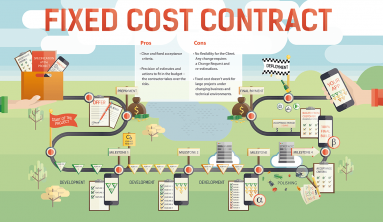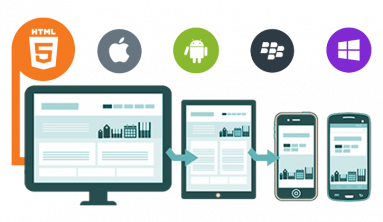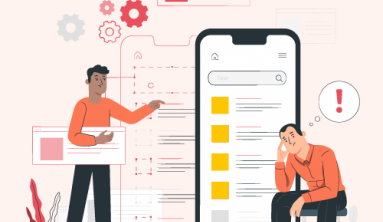Progressive Web Apps are on a lot of companies' roadmap to modernize their website and adapt to users' new expectations. Like all new concepts and technical capabilities, they raise questions: is it what my customers want, how much will it grow my business, what is technically feasible?

To shape your digital strategy, several stakeholders are often involved: the Product Manager and CMO are co-owners of the business impact of each feature, the CTO assesses the feasibility and reliability of a technology, the UX Researchers validate that a feature answers a real customer issue.
This article aims to help you answer those three questions and shape your PWA project. You will start from your customer needs, translate this into PWA features, and focus on measuring the business impact that each feature brings to the table.
PWAs solve customer needs #
One rule we love to follow at Google when making products is "focus on the user and all else will follow". Think user-first: what are my customers' needs, and how does a PWA provide them?

When doing user research, we find some interesting patterns:
- Users hate delays and unreliability on mobile: the level of stress caused by mobile delays is comparable to watching a horror movie.
- Fifty percent of smartphone users are more likely to use a company's mobile site when browsing or shopping because they don't want to download an app.
- One of the top reasons for uninstalling an app is the limited storage (whereas an installed PWA usually takes less than 1MB).
- Smartphone users are more likely to purchase from mobile sites that offer relevant recommendations on products, and 85% of smartphone users say mobile notifications are useful.
According to those observations, we found out that customers prefer experiences that are fast, installable, reliable, and engaging (F.I.R.E.)!
PWAs leverage modern web capabilities #
PWAs provide a set of best practices and modern web APIs that are aimed at meeting your customers' needs by making your site fast, installable, reliable, and engaging.
For example, using a service worker to cache your resources and doing predictive prefetching makes your site faster, and more reliable. Making your site Installable provides an easy way for your customers to access it directly from their home screen or app launcher. And new APIs like Web Push Notifications make it easier to re-engage your users with personalized content to generate loyalty.

Understand the business impact #
The business success definition can be a lot of things depending on your activity:
- Users spending more time on your service
- Reduced bounce rates for your leads
- Improved conversion rates
- More returning visitors
Most PWA projects result in a higher mobile conversion rate, and you can learn more from the numerous PWA case studies. Depending on your objectives, you may want to prioritize some aspects of PWA that make more sense for your business, and it's completely OK. PWA features can be cherry-picked and launched separately.
Let's measure the business impact of each of these great F.I.R.E features.
The business impact of a fast website #
A recent study from Deloitte Digital shows that page speed has a significant impact on business metrics.
There's a lot you can do to optimize the speed of your site to optimize the critical user journeys for all of your users. If you don't know where to start, take a look at our Fast section, and use Lighthouse to prioritize the most important things to fix.
When working on your speed optimizations, start measuring your site speed frequently with appropriate tools and metrics to monitor your progress. For example, measure your metrics with Lighthouse, fix clear targets like having "Good" Core Web Vitals scores, and incorporate a performance budget into your build process. Thanks to your daily measurements and the "value of speed" methodology, you can isolate the impact of your incremental speed changes and calculate how much extra revenue your work has generated.

Ebay made speed a company objective for 2019. They used techniques like performance budget, critical path optimization, and predictive prefetching. They concluded that for every 100 milliseconds improvement in search page loading time, add-to-card count increased by 0.5%.

The business impact of an installable website #
Why would you want a user to install your PWA? To make it easier to come back to your site. Where a native app install would add at least three steps (redirection to Play Store, downloading, relaunching the native app at the top of the funnel), PWA installation is done seamlessly in one click, and it doesn't take the user away from the current conversion funnel.

Once installed, users are able to launch it in one click from the icon on their home screen, see it in their app tray when they are switching between apps, or find it via an app search result. We call this app dynamic Discover-Launch-Switch, and making your PWA installable is the key to unlocking access.
In addition to being accessible from familiar discovery and launch surfaces on their device, a PWA launches exactly like a native app: in a standalone experience, separate from the browser. Additionally, it benefits from native device services such as the app switcher and settings.
Users who install your PWA are likely your most engaged users, with better engagement metrics than casual visitors, including more repeat visits, longer time on site and higher conversion rates, often at parity with native app users on mobile devices.
To make your PWA installable, it needs to meet the base criteria. Once it meets those criteria, you can promote the installation within your user experience on desktop and mobile, including iOS.

Once you've begun to promote the installation of your PWA, you should measure how many users are installing your PWA, and how they use your PWA.
To maximize the number of users installing your site, you may want to test different promotion messages ("install in one second", or "add our shortcut to follow your order" for example), different placements (header banner, in-feed), and try proposing it at different steps of the funnel (on the second page visited, or after a booking).
To understand where your users are leaving and how to improve retention, the install funnel can be measured in four ways:
- Number of users eligible to install
- Number of users who clicked on the UI install prompt
- Number of users who both accepted and declined to install
- Number of users who have successfully installed
You can start promoting your PWA install to all your users or use a more cautious approach by only experimenting with a small group of users.
After a few days or weeks you should already have some data to measure the impact on your business. What is the behaviour of people coming from the installed shortcut? Do they engage more, do they convert more?
To segment users who installed your PWA, track the appinstalled event, and use JavaScript to check if users are in standalone mode (indicating usage of the installed PWA). Then use these as variables or dimensions for your analytics tracking.

The case study of Weekendesk is interesting: they propose Installation on the second page visited to maximise the install rate, and they observed that customers coming back via the icon on the home screen were more than twice as likely to book a stay with them.

Installation is a great way to make people return on your site and improve your customer loyalty. You can also think of personalizing the experience for those premium users.
Even if you already have a native app, you may test to propose your app first then push the PWA later for those who declined or did not engage with the app install banner. Some of your users that are "semi-engaged" may not meet the threshold for an app store-based install. This cohort can be addressed with PWA installability that is often perceived as lighter, and with less friction.

The business impact of a reliable website #
The Chrome Dino game, offered when a user is offline, is played more than 270 million times a month. This impressive number shows that network reliability is a considerable opportunity, especially in markets with unreliable or expensive mobile data like India, Brazil, Mexico, or Indonesia.
When a native app, installed from an app store, is launched, users expect it to open, regardless of whether they're connected to the internet. Progressive Web Apps should be no different.
At a minimum, a simple offline page that tells the user the app isn't available without a network connection should be served. Then, consider taking the experience a step further by providing some functionality that makes sense while offline. For example, you could provide access to tickets or boarding passes, offline wish lists, call center contact information, articles or recipes that the user has recently viewed, etc.

Once you've implemented a reliable user experience, you may want to measure it; how many users are going offline, in which geographies, and do they stay on the website when the network is back?
Offline usage can be measured by recording analytics pings when the user goes offline or online. It tells you how many users continue browsing on your website after the network comes back.

The Trivago case study illustrates how this can impact your business objectives: for users whose sessions were interrupted by an offline period (around three percent of users), 67% of those who come back online continued browsing the site.
The business impact of an engaging website #
Web push notifications allow users to opt-in to timely updates from sites they love and allow you to effectively re-engage them with customized, relevant content.
Be careful, though. Asking users to sign up for web notifications when they first arrive and without exposing the benefits can be perceived as spammy and negatively affect your experience. Make sure to follow best practices when prompting for notifications and inspire acceptance through relevant usages like train delays, price tracking, out of stock products, etc.
Technically, push notifications on the web run in the background thanks to a service worker and are often sent by a system built for managing campaigns (e.g. Firebase). This feature brings great business value for mobile (Android) and desktop users: it increases repeated visits and consequently sales and conversions.
To measure the effectiveness of your push campaigns, your need to measure the whole funnel:
- Number of users eligible for push notifications
- Number of users who click a custom notification UI prompt
- Number of users who grant push notification permission
- Number of users who receive push notifications
- Number of users who engage with notifications
- Conversion and engagement of users coming from a notification

There are a lot of great case studies on web push notifications, like Carrefour who multiplied their conversion rate by 4.5 by re-engaging users with abandoned carts.
The P in PWA: a progressive launch, feature by feature #
PWAs are modern websites that benefit from the massive reach of the web, combined with all the user-friendly features that users love in native apps. They leverage a set of best practices and modern web APIs, that can be implemented independently depending on your business specificities and priorities.

To accelerate the modernization of your website and make it a real PWA, we encourage you to be agile: launch feature by feature. First, research with your users what features would bring them the most value, then deliver them with your designers and developers, and finally do not forget to measure precisely how much extra money your PWA generated.
Source: web.dev



